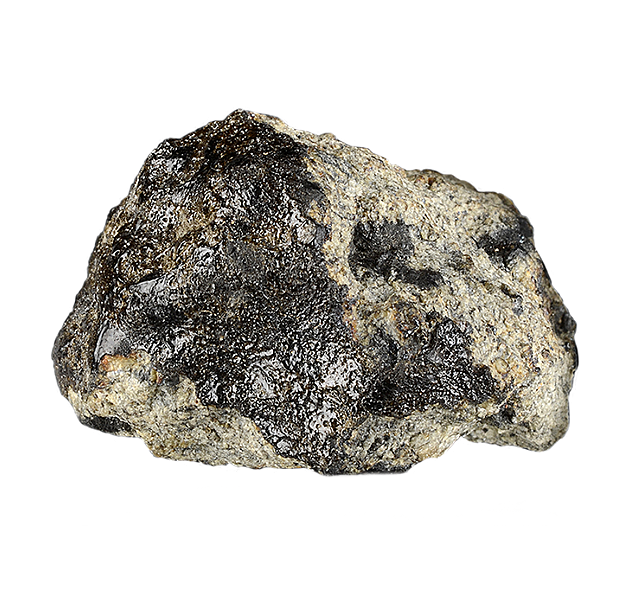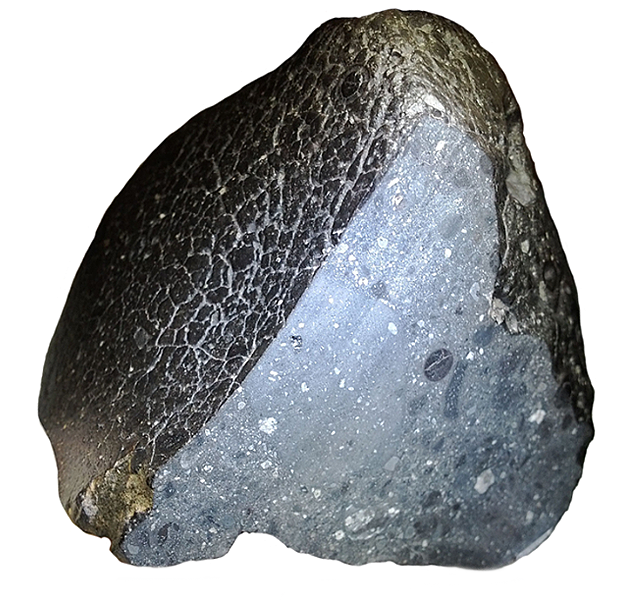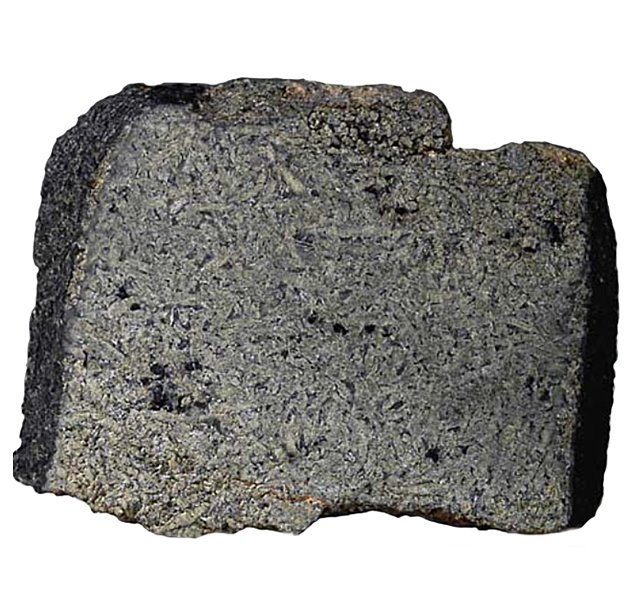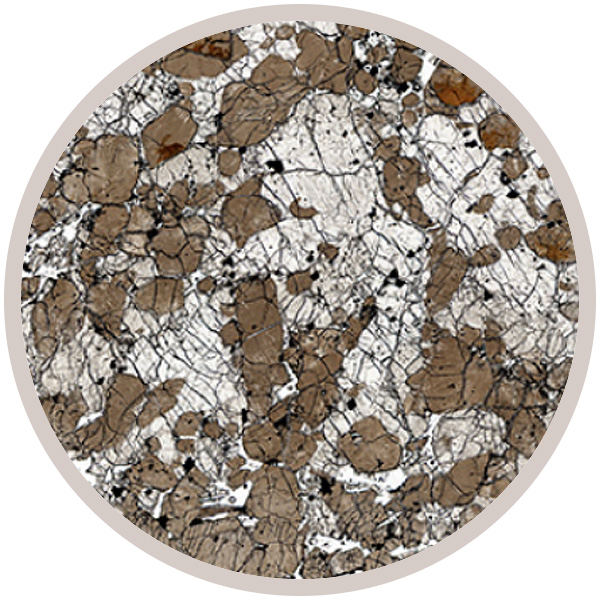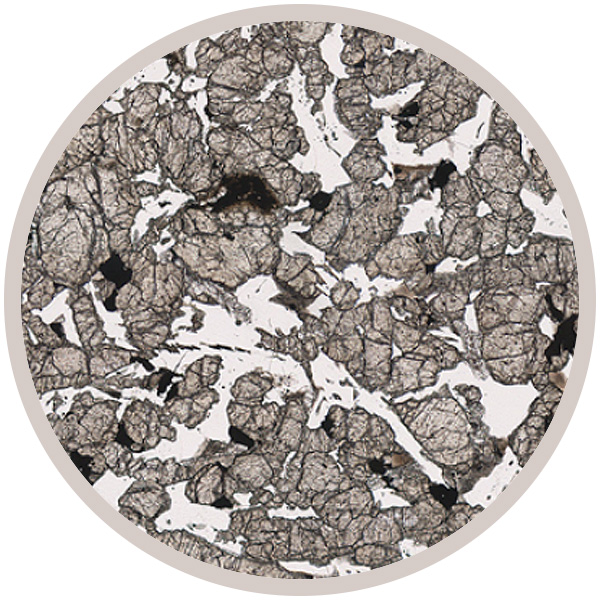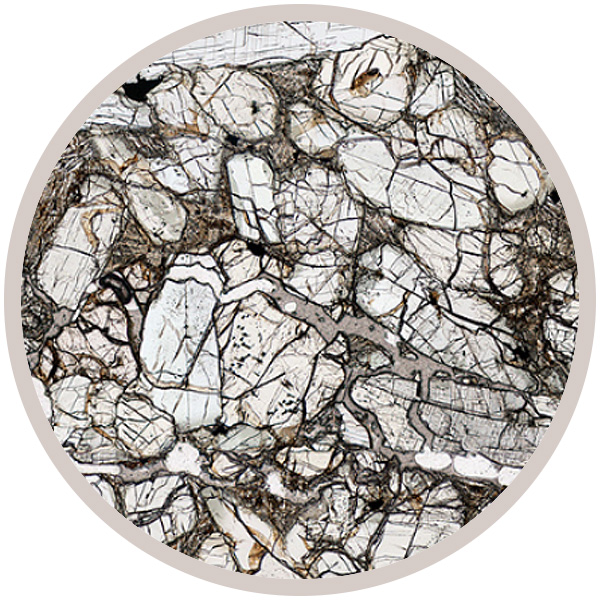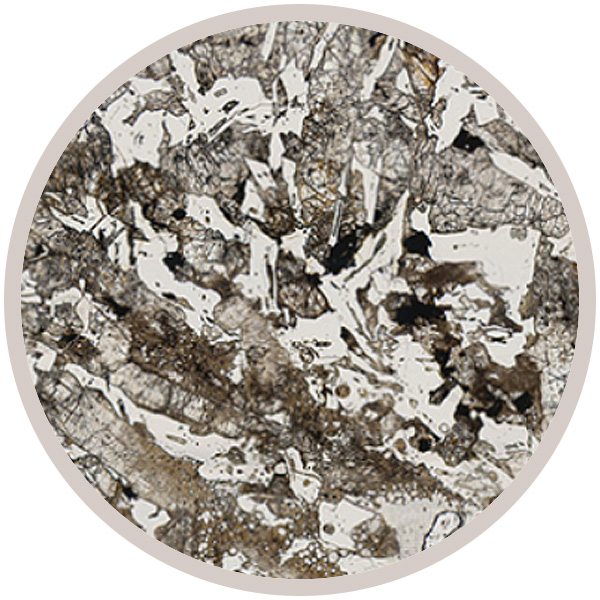
Fact sheet
EETA 79001 is a large (7942 gram) meteorite that was recovered during the 1979 ANSMET expedition. It was found on the ice at the Elephant Moraine, near Reckling Peak, Victoria Land, Antarctica. It is an especially important sample because gas inclusions in the glass (seen in the top right of this thin section) in it were found to contain rare gas and nitrogen compositions matching those of the Martian atmosphere as determined by the Viking spacecraft. This was the crucial evidence that the SNC meteorites came from Mars.
EETA 79001 is a shergottite containing two different igneous lithologies separated by an obvious linear contact (visible in our first sample). Lithology A (Rb/Sr 173±10 Ma) is a basaltic melt containing mafic inclusions and clusters of olivine and low-Ca pyroxene in a fine-grained matrix that also contains Cr-spinel, merrilite, Cl-rich apatite, ilmenite and pyrrhotite. The lithology also contains pockets and veinlets of dark glass, which are visible in our second sample. Lithology A has been interpreted as an impact melt and is described as an olivine-phyric shergottite. Lithology B (Rb/Sr 185±25 Ma) is a typical basalt consisting of augite laths in a matrix of pigeonite-augite, maskelynite (after plagioclase feldspar), ülvospinel-ilmenite intergrowths, whitlockite and Cl-apatite.
This description draws on the work of NASA scientist Charles Meyer - compiler of The Mars Meteorite Compendium. A pdf document describing EETA 79001 is available here.
Note that our samples are research specimens and have suffered some damage during their time in electron optical instruments.
This collection of meteorites includes Shergottites, Nakhlites and Chassignites (or SNC meteorites) which originate from the surface of the planet Mars.
They carry unique signals of the surface of the planet that allows scientists to study the composition and age of Martian rocks. The collection includes a sample of the famous ALH84001 meteorite, evidence from which was used in 1996 to begin the debate of 'life on Mars?'.

